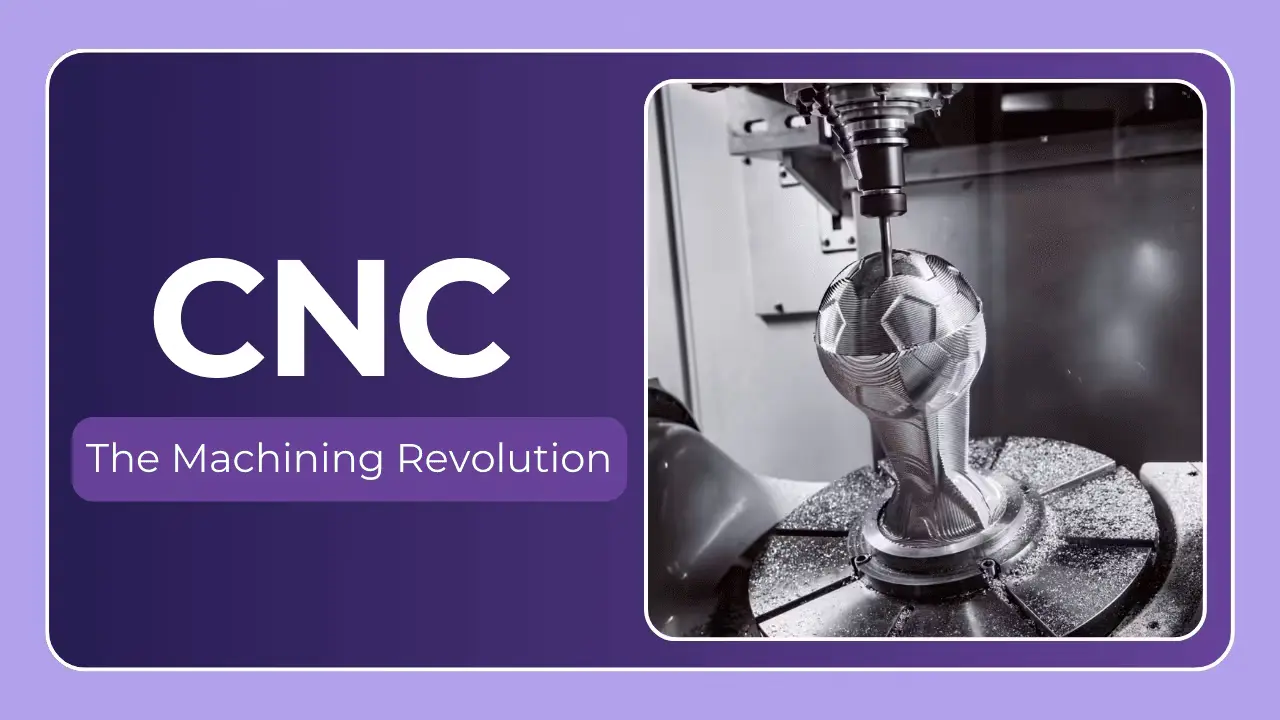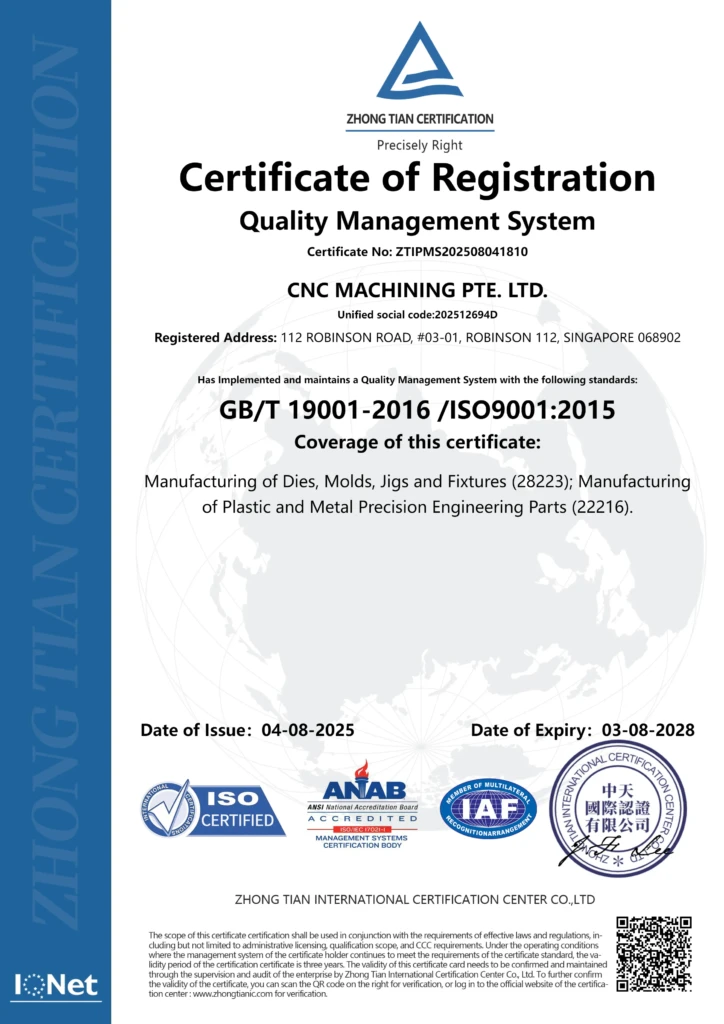Delving into the World of 5-Axis CNC Machining: Capabilities, Applications & Why It Matters
For decades, CNC machining has been the cornerstone of precision manufacturing, enabling the creation of complex parts with incredible accuracy. But the landscape of CNC machining is constantly evolving. While 3-axis machining remains prevalent, the demand for more intricate geometries and higher efficiency has propelled 5-axis CNC machining into the forefront. At CNC MACHINING PTE. LTD, a leading five-axis CNC machining manufacturer in Singapore, we’ve seen firsthand the transformative power of this technology. This article will break down everything you need to know about 5-axis CNC machining, from its core principles to its diverse applications and the benefits it offers.
What is 5-Axis CNC Machining? A Fundamental Understanding
Traditional 3-axis CNC machining operates along three linear axes: X, Y, and Z. Think of it as carving a shape from a block of material by moving a cutting tool along these three directions. While capable, this method often requires multiple setups to machine complex parts, leading to increased production time and potential inaccuracies.
5-axis machining adds two rotational axes – typically designated as A and B, or A and C – to the linear movements. These rotational axes allow the cutting tool to approach the workpiece from multiple angles simultaneously. This is the key difference. Instead of repositioning the part or the machine between operations, the tool can maintain optimal contact with the surface, resulting in:
- Increased Complexity: The ability to machine incredibly intricate shapes and undercuts that are impossible or extremely difficult with 3-axis machining.
- Reduced Setups: Fewer setups translate directly to reduced labor costs, shorter lead times, and minimized potential for errors introduced during repositioning.
- Improved Surface Finish: Consistent tool angles lead to a smoother, more uniform surface finish.
- Higher Accuracy: Minimizing setups and maintaining consistent tool contact contribute to tighter tolerances and greater overall accuracy.
- Shorter Cycle Times: Optimized toolpaths and reduced setups often result in faster machining times.
Understanding the Different 5-Axis Configurations
Not all 5-axis machines are created equal. The arrangement of the rotational axes dictates the machine’s capabilities and suitability for specific applications. Here’s a breakdown of the common configurations:
| Configuration | Description | Typical Applications | Advantages | Disadvantages |
|---|---|---|---|---|
| Trunnion Table (Tilting/Rotating) | The workpiece is mounted on a table that can tilt (A-axis) and rotate (C-axis). The tool remains fixed. | Aerospace components, medical implants, molds & dies. | Excellent rigidity, good for heavy workpieces, versatile. | Limited reach for very tall parts. |
| Swivel Head (Tilting/Rotating) | The cutting tool is mounted on a head that can tilt (A-axis) and rotate (C-axis). The workpiece remains fixed. | Complex molds, turbine blades, intricate features. | Good reach, ideal for deep cavities, faster tool changes. | Can be less rigid than trunnion tables, potentially more vibration. |
| Table-Head (Tilting/Rotating) | Combines a tilting/rotating table and a tilting/rotating head. | Highly complex parts requiring access from all angles. | Maximum flexibility, capable of machining the most challenging geometries. | Most expensive, requires skilled programming and operation. |
| 5-Axis Mill-Turn | Integrates milling and turning operations on a single machine with 5-axis capability. | Complex cylindrical parts, gears, shafts. | High efficiency, reduced handling, excellent accuracy. | Specialized application, higher initial investment. |
The Power of Simultaneous vs. 3+2 Machining
Within 5-axis machining, there are two primary operational modes:
- Simultaneous 5-Axis Machining: All five axes move concurrently to create complex contours. This is where the true power of 5-axis machining lies, enabling the creation of organic shapes and intricate details. Requires sophisticated CAM programming and a powerful machine controller.
- 3+2 Axis (Positional) Machining: The two rotational axes are used to position the workpiece, then locked in place while the three linear axes perform the machining operation. Essentially, it’s like performing multiple 3-axis operations in different orientations without physically repositioning the part. Easier to program than simultaneous 5-axis machining and suitable for parts with complex features but relatively simple surfaces.
Applications Across Industries: Where 5-Axis Shines
The versatility of 5-axis CNC machining makes it invaluable across a wide range of industries:
- Aerospace: Manufacturing complex turbine blades, impellers, structural components, and housings with tight tolerances and demanding material requirements. The ability to machine near-net-shape reduces material waste and machining time.
- Medical: Creating intricate implants, surgical instruments, and prosthetics with biocompatible materials. The precision and surface finish are critical for these applications.
- Automotive: Producing molds for composite parts, engine components, and complex tooling.
- Mold & Die Making: Manufacturing highly detailed molds and dies for plastic injection molding, die casting, and forging. 5-axis machining allows for the creation of complex cooling channels and intricate features.
- Energy: Machining components for turbines, pumps, and other energy-related equipment.
- Defense: Producing specialized components for military applications requiring high precision and reliability.
Materials Commonly Machined with 5-Axis CNC
5-axis CNC machining isn’t limited to specific materials. We at CNC MACHINING PTE. LTD routinely work with:
- Aluminum Alloys: Popular for aerospace, automotive, and general engineering applications.
- Stainless Steel: Used for its corrosion resistance and strength in medical, food processing, and marine industries.
- Titanium: High strength-to-weight ratio makes it ideal for aerospace and medical implants.
- Inconel & Other Superalloys: Used in high-temperature applications like turbine blades.
- Plastics & Composites: Machining complex shapes in materials like PEEK, Delrin, and carbon fiber.
Why Choose CNC MACHINING PTE. LTD for Your 5-Axis Needs?
At CNC MACHINING PTE. LTD, we understand that choosing the right manufacturing partner is crucial. We offer:
- State-of-the-Art Equipment: We invest in the latest 5-axis CNC machining centers to ensure precision, efficiency, and versatility.
- Experienced Engineers & Programmers: Our team possesses the expertise to tackle even the most challenging projects, from CAM programming to process optimization.
- Comprehensive Services: Beyond machining, we provide a full suite of post-processing services, including deburring, polishing, surface finishing, and assembly.
- Rapid Prototyping & Production: We can handle both small-batch prototypes and large-scale production runs.
- Competitive Pricing: We strive to deliver high-quality parts at competitive prices.
- Commitment to Quality: We adhere to strict quality control standards to ensure that every part meets your exact specifications.
Conclusion: The Future is 5-Axis
5-axis CNC machining is no longer a niche technology; it’s becoming increasingly essential for manufacturers seeking to create complex, high-precision parts efficiently. The benefits – reduced setups, improved accuracy, enhanced surface finish, and shorter cycle times – translate directly to cost savings and a competitive advantage.
As industries continue to demand more intricate designs and tighter tolerances, the demand for 5-axis machining will only grow. If you’re facing a challenging machining project, or looking to optimize your manufacturing process, exploring the capabilities of 5-axis CNC machining is a smart move.
Ready to discuss your project? Contact CNC MACHINING PTE. LTD today for a quote and discover how we can help you bring your designs to life with precision and efficiency. Customize your precision parts now at the best price!




